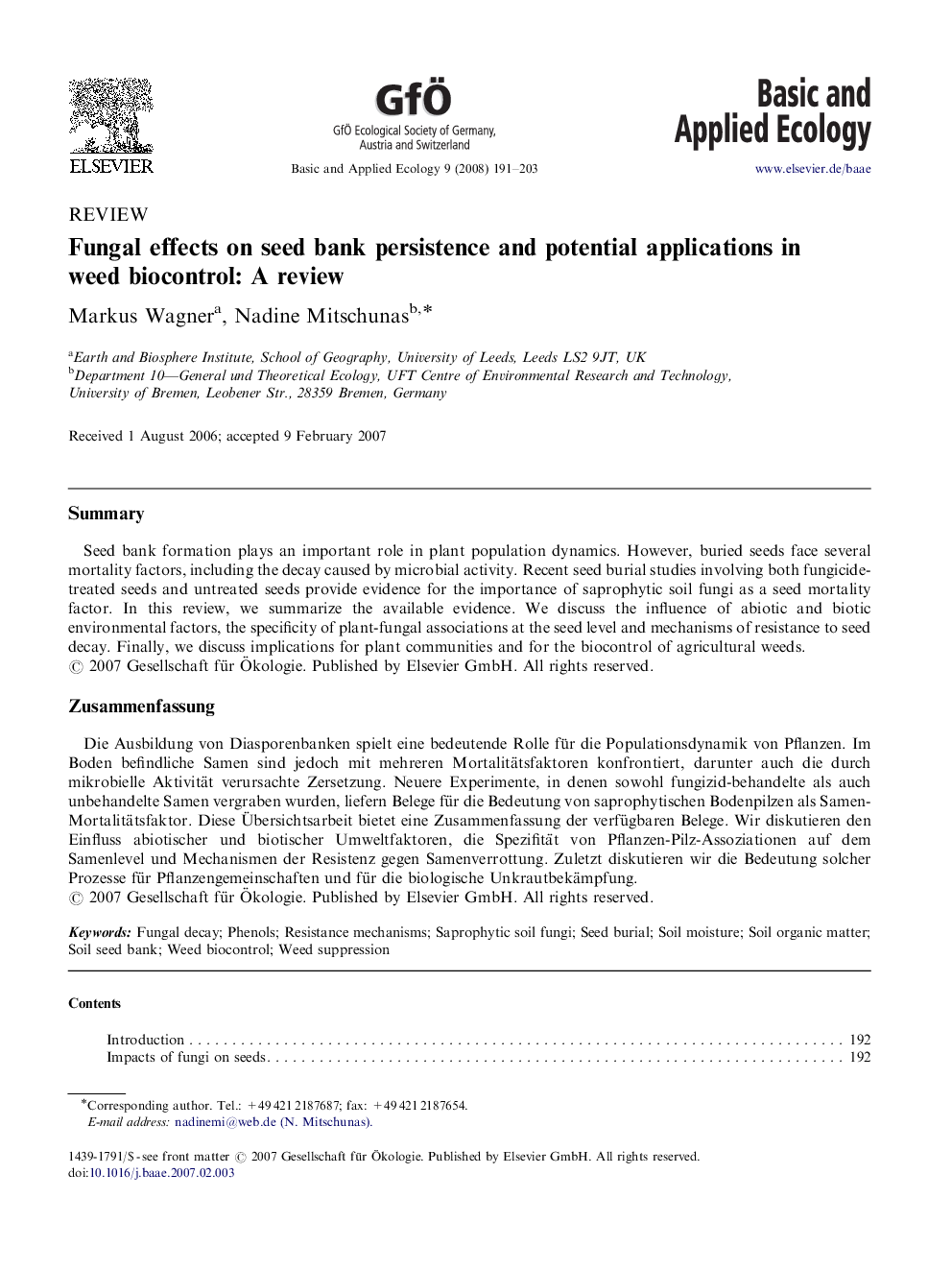| Article ID | Journal | Published Year | Pages | File Type |
|---|---|---|---|---|
| 4384917 | Basic and Applied Ecology | 2008 | 13 Pages |
SummarySeed bank formation plays an important role in plant population dynamics. However, buried seeds face several mortality factors, including the decay caused by microbial activity. Recent seed burial studies involving both fungicide-treated seeds and untreated seeds provide evidence for the importance of saprophytic soil fungi as a seed mortality factor. In this review, we summarize the available evidence. We discuss the influence of abiotic and biotic environmental factors, the specificity of plant-fungal associations at the seed level and mechanisms of resistance to seed decay. Finally, we discuss implications for plant communities and for the biocontrol of agricultural weeds.
ZusammenfassungDie Ausbildung von Diasporenbanken spielt eine bedeutende Rolle für die Populationsdynamik von Pflanzen. Im Boden befindliche Samen sind jedoch mit mehreren Mortalitätsfaktoren konfrontiert, darunter auch die durch mikrobielle Aktivität verursachte Zersetzung. Neuere Experimente, in denen sowohl fungizid-behandelte als auch unbehandelte Samen vergraben wurden, liefern Belege für die Bedeutung von saprophytischen Bodenpilzen als Samen-Mortalitätsfaktor. Diese Übersichtsarbeit bietet eine Zusammenfassung der verfügbaren Belege. Wir diskutieren den Einfluss abiotischer und biotischer Umweltfaktoren, die Spezifität von Pflanzen-Pilz-Assoziationen auf dem Samenlevel und Mechanismen der Resistenz gegen Samenverrottung. Zuletzt diskutieren wir die Bedeutung solcher Prozesse für Pflanzengemeinschaften und für die biologische Unkrautbekämpfung.
